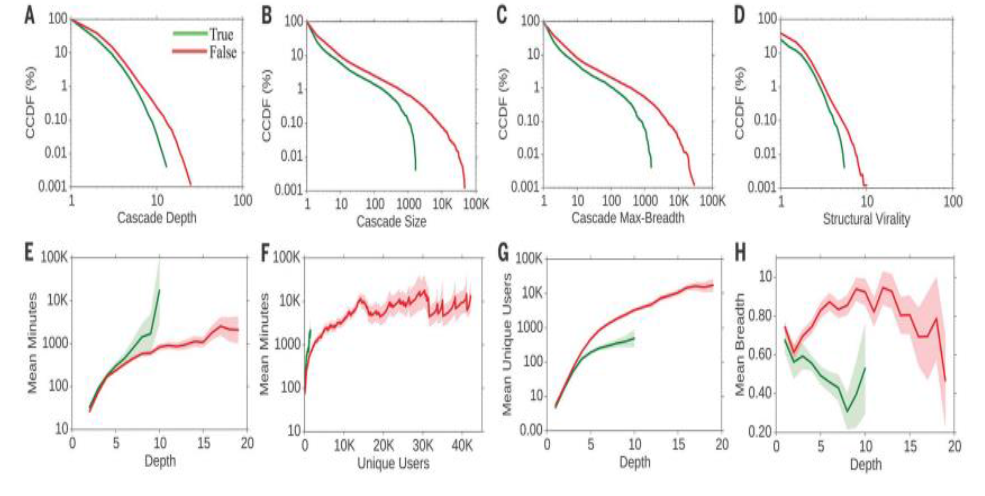Fake News: The 5 Most Important Things You Need to Know to Understand and Combat It
Fake news, as defined by Ifop, is intentionally created and spread online with the purpose of deceiving people. Despite efforts to combat it over the past four years, the battle against this phenomenon remains a formidable challenge. To gain a deeper understanding of fake news, it is important to examine its unique characteristics and peculiarities.
1. A social issue taken in hand by the media
2. Are the Social Networking Giants at Work (or Not)
3. False Information Boosted by Algorithms
4. Who Disseminates “Fake News”?
5. The Multiple Challenges in the Fight Against Fake News
1. A Social Issue Taken Up by the Media
Fake news has thus become a real issue, and the mainstream media are now also involved in dealing with and mediatizing this phenomenon. For example, in January 2019, L'Obs published on its front page "the cancer of fake news."
Media outlets such as web press and radio stations have been actively combatting Fake News by forming specialized teams and sections dedicated to fact-checking for several years. Even television is now joining in on this effort. Along with existing programs and sections in other media outlets like Franceinfo, TF1, and France 2, certain radio stations have also created their own "pastilles" exclusively for fact-checking purposes. Our article on resources and tools provides a comprehensive overview of these channels.
Especially in France, this battle with disinformation takes the form of initiatives launched mainly by journalists, media, and associations. For example, Eucheck.fr, a fact-checking initiative launched in 2019 by the European Association of Journalism Schools to combat disinformation a few months before the European elections, or Fake Off, an association of journalists committed to educating young people about the media and the fight against disinformation, rumors, fake news, and conspiracies.
Around the world, fact-checking journalists rally around the "Code of Principles" of the International Fact-checking Network (IFCN), an international network of fact-checking media.
2. Are the Social Networking Giants at Work (or Not)
 Social media platforms have been grappling with the issue of disinformation and fake news for quite some time now. Despite their efforts to combat this problem, the sheer volume of false information makes it difficult to eradicate completely. Additionally, these platforms are often criticized for not taking appropriate or sufficient action to address the issue.
Social media platforms have been grappling with the issue of disinformation and fake news for quite some time now. Despite their efforts to combat this problem, the sheer volume of false information makes it difficult to eradicate completely. Additionally, these platforms are often criticized for not taking appropriate or sufficient action to address the issue.
Moderating or even deleting controversial content and the accounts of its authors on social media is a complex challenge and a prerogative that many believe should not be the sole responsibility of the companies that manage these platforms, as shown by the recent reports of tweets from Donald Trump's account by Twitter Inc. in November and the subsequent deletion of his profile in January.
3. False Information Boosted by Algorithms
The spread of fake news is not a recent phenomenon. The act of spreading rumors has existed for centuries, with the infamous Orléans rumor serving as one example. However, with the advent of web applications and social media platforms, the production and dissemination of fake news has become more widespread and efficient. Some wealthy states or lobby groups even benefit from this practice, using it as a tool to manipulate public opinion.
Shockingly, fake news can spread up to six times faster than real news, as reported by a study conducted by MIT.
The primary reason for this phenomenon is the strong emotional response, often negative, that such content provokes. Additionally, the popularity of viral formats such as videos, animations, and images, coupled with the sharing habits of internet users and the algorithms used by social networks, all contribute to the increased visibility and subsequent re-sharing of posts with high levels of engagement, such as likes and comments. Examples of this can be seen in the sharing of content within Facebook groups, as well as its appearance on users' feeds and timelines on both Facebook and Twitter.
You might have encountered this on your social media feeds such as Facebook, Instagram, or Twitter. Unreliable and fake "information" is promptly posted by amateur accounts and gets widely circulated due to its novelty. On the other hand, authentic information that is published later by reputable news agencies after verification is often overshadowed as algorithms prioritize the "information" that was posted first and extensively shared.

"The Spread of True and Fake News/Claims in Online Social Networks" (Revue Science)
4. Who Disseminates “Fake News”?
Potentially everyone...
According to Professor Oihab Allal-Chérif, there are individuals who embrace institutional and malicious conspiracy theories. They analyze, enhance, merge, and disseminate them in various ways. This phenomenon can be described as the "uberisation" of fake news, where everyone participates as a consumer, producer, and distributor. In a world where people believe they are knowledgeable and are influenced by cognitive biases, it is their obligation to inform others about the hidden truths that they have uncovered and that the powerful are trying to obscure.
...but not with the same effect!
However, not everyone has the same impact when spreading fake news. For example, one study found that celebrities and politicians with large social media followings were the main purveyors of misinformation about the coronavirus.
Fact-checkers and mainstream media struggled to match the reach of these influencers:
According to the Oxford Reuters Institute for the Study of Journalism, although only 20% of false claims about the coronavirus were created or spread by politicians, celebrities, and other well-known public figures, their social media posts generated 69% of total engagement.
A notable instance is Donald Trump, whose tweets were widely shared without regard for their content, making him a significant influencer. Laysia Palen, an information science professor at the University of Colorado, labeled this occurrence as "unprecedented," referring to Trump's ability to amplify his message.
A study published by the Election Integrity Partnership, a consortium of misinformation researchers, found that just 20 conservative, pro-Trump Twitter accounts - including @realDonaldTrump - were the original source of 20% of the retweets that published misleading stories about the election.
Trump's tweet frequency has been consistently exceeding 1,000 per month, with each tweet receiving an astonishing average of almost 17,000 retweets. Experts agree that this volume of engagement is truly remarkable and unparalleled in the English-speaking world. With a core group of more than 500 particularly enthusiastic followers who consistently retweeted all of his tweets.
Interestingly, during the 2016 US presidential election, a study published in Science Advances revealed that individuals over 65 years old tend to share up to seven times more false information compared to young adults aged 18 to 29 on the internet.
5. The Multiple Challenges in the Fight Against Fake News
Sharing Emotions
As underlined by Benoît Raphaël, a media innovation expert, journalist, and creator of Le Plus de l'Obs and Le Lab d'Europe 1, fact-checkers face a challenge beyond just proving information false. Recent studies show that even with proof, people still share false information because they prioritize the message or emotion it conveys. While journalists and trusted third parties can fact-check, it's also important for individuals to verify information autonomously.
Unfortunately, many people are inclined to believe fake news that aligns with their desires and positions, and they share it with like-minded individuals who may never come across fact-checking efforts.
Insensitivity to Fact-checking
In today's climate of widespread mistrust towards politicians, institutions, companies, and the media (as evidenced by the Cevipof study and the La Croix barometer of French trust in the media), those who consume fake news are becoming increasingly resistant to the analyses and reports of fact-checkers employed by the media.
Persistence
The prevalence of fake news remains a persistent issue. Despite the tireless efforts of individuals such as Hoaxbuster over the course of nearly two decades to expose hoaxes, fake news continues to circulate. Even when fact-checkers confirm the falsity of the information, some individuals who spread fake news refuse to remove their posts. Unfortunately, corrections or errata are frequently less widely shared and visible than the original false information. This perpetuates the spread of misinformation and must be addressed decisively.
Restore trust in your sources and analytics.
Tools for Market Research
Written by Christophe Asselin
Christophe est Senior Insights & Content Specialist @ Onclusive. Fan du web depuis Compuserve, Lycos, Netscape, Yahoo!, Altavista, Ecila et les modems 28k, de l'e-réputation depuis 2007, il aime discuter et écrire sur la veille et le social listening, les internets, les marques, les usages, styles de vie et les bonnes pratiques. Il est expert Onclusive Social (ex Digimind Social)


